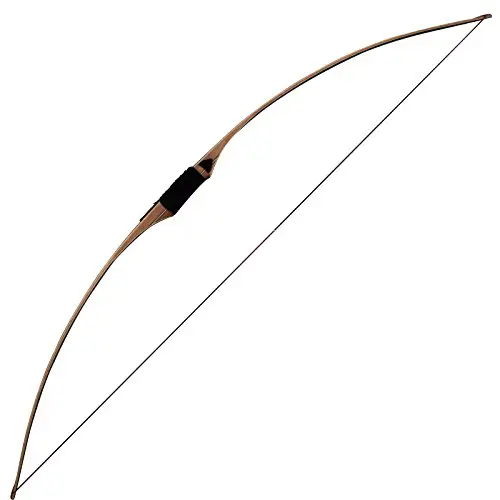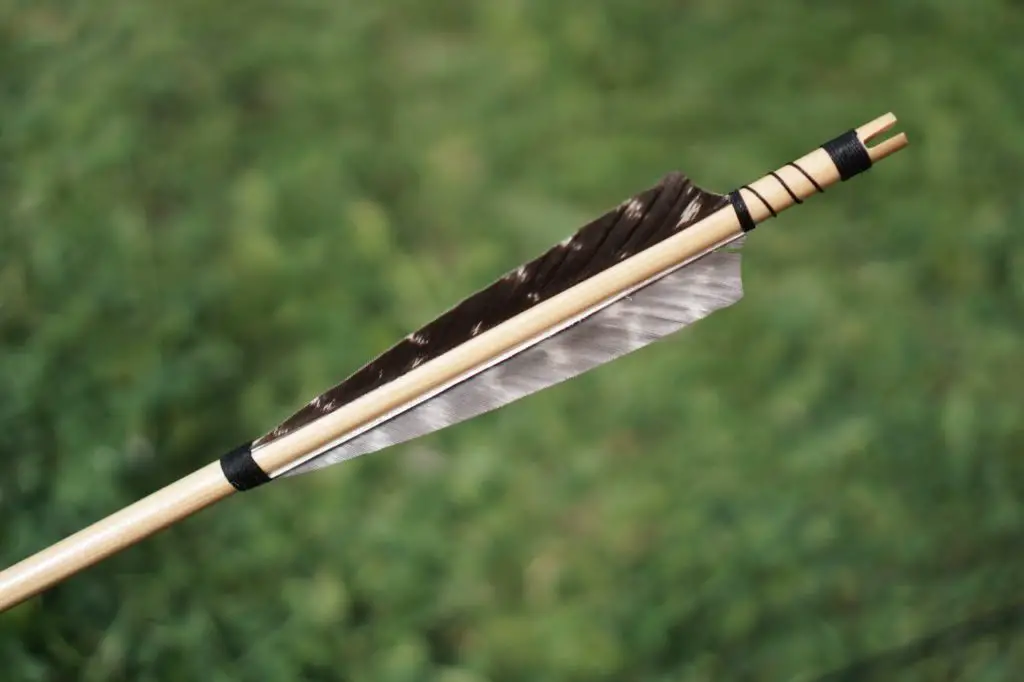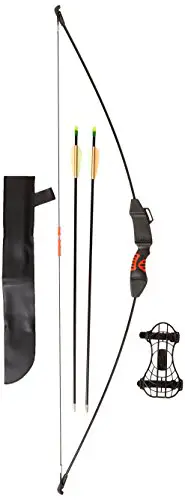When you purchase a recurve bow, it will most likely be shipped in several pieces. The limbs are usually disconnected from the riser for shipping so you will probably need to be assemble the bow once you receive it. Once the bow has been put together, your next step will be to string it. Stringing a recurve bow is made infinitely easier with the use of a bow stringer.
A recurve bow stringer allows you to apply pressure to the bow and bend the limbs without harming them so you can slip your string over the tips of the bow. A good bow stringer will distribute the pressure evenly between the limbs without twisting them which protects the limbs from damage.
There are other methods you can use to string your bow without a recurve bow stringer however these methods are significantly more likely to wreck the limbs and are not recommended by any of the major recurve bow manufacturers. In fact, a lot of manufacturers, such as Bear Archery and Martin Archery, often refuse to warranty bows that have been strung without the use of a bow stringer.
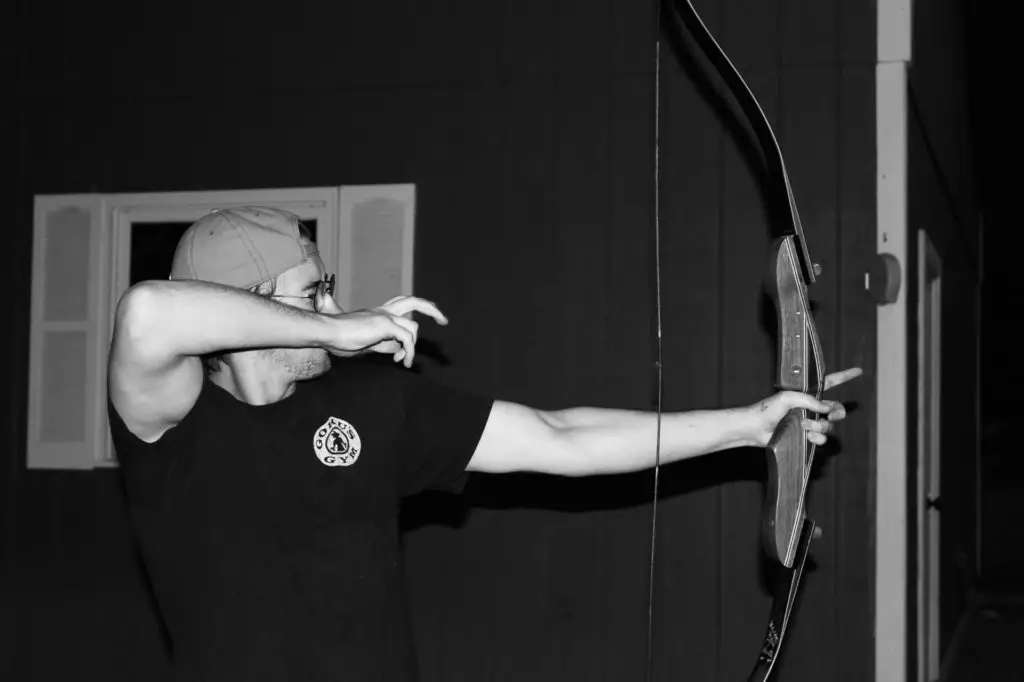
Since a stringer is such a valuable recurve bow accessory, it is wise to do your research and make sure you choose a good bow stringer. In this article we will review some of the best recurve bow stringers currently available.
Best Recurve bow Stringers
Table could not be displayed.Selway Limbsaver Recurve Bow Stringer

One of the most popular bow stringers on the market, the Limbsaver Recurve Stringer from Selway Archery Products is a simple well designed stringer. The reviews online generally agree that it is very easy to use and typically lasts for a good length of time, typically 9-12 months even if you’re shooting every week!
The Limbsaver has a thick well-stitched nylon sleeve on one end and a rubber boot on the other end with a black paracord rope connecting them to each other. The nylon sleeve is very easy to slide the tip of your recurve bow into and provides a strong secure holding point.
The rubber boot on the other end is nicely contoured so it snugly fits the curvature of most recurve bow limbs without slipping or moving around once you apply pressure to the stringer. The paracord rope is strong and easily capable of handling the weight of even the biggest recurve hunting bows.
As a little added bonus, the rubber boot and rope can be tucked away into the nylon sleeve which makes carrying and storing the Selway Limbsaver very convenient!
FEATURES
- Large nylon sleeve to hold the limb tip
- Non-slip rubber boot
- Strong paracord rope
- Easily capable of handling stiff limbs
- Intuitive and easy for beginners to use
The Selway Limbsaver is a popular well known recurve bow stringer, adored by both seasoned hunters and beginner archers! If you’re looking for one of the best recurve bow strings available, why don’t you pick one up today?
Neet Recurve Bow Stringer

In order to take proper care of your recurve bows, and make sure they last as long as possible, you should be leaving them unstrung when not in use. Consequently, you will likely be stringing and unstring your bow very frequently if you plan to use it!
The Neet Recurve Bow Stringer features a boot that fits over the end of the lower limb of your bow. This boot helps keep the lower limb from twisting as you string the bow. The cap on the upper end helps you control it as you bend the bow.
The stringer has a nylon cord that can handle up to 380 pounds of weight, so you can be assured that no matter what pound bow you use, your stringer will always be strong enough for the task. The Neet Stringer even adjusts to the length of any bow. This is the ideal safety tool for any beginning archer.
Saunders No-Twist Bow Stringer

Saunders have taken pride in building a bow stringer that makes stringing your bow a piece of cake! They know that this hobby is a great way to bring your family together and they want to help you avoid the frustration of restringing your bow as much as possible.
First off, the Saunders No-Twist Conventional & Recurve Bow Stringer has a very intuitive, even simple design. The Saunders wanted to learn from the mistakes of others, so they perfected the basic stringer design with one pocket and one gripper on the string.
They knew that this would result in a recurve bow stringer that would be easy to use which they definitely accomplished!
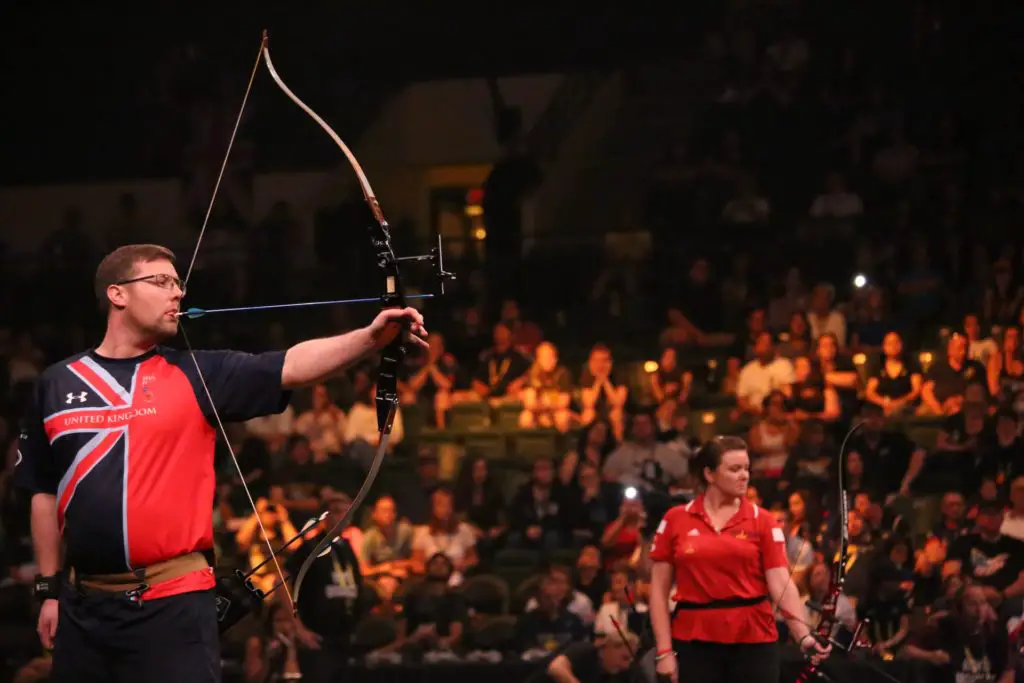
The Saunders No-Twist Recurve Bow Stringer also features a tough, durable nylon braid rope, capable of lasting a long time. Long after you need to replace the string on your or your child’s archery set. Moreover, the stringer will even work for draw weights up to 70 pounds so it can handle your biggest hunting bows as well!
The stringer is very versatile and will work with the variety of bows including the very difficult-to-string Samick brand. If they can work with the Samick sage, then you definitely know they should work with any brand of recurve bow that you can throw at it.!
Finally, this stringer is very easy to use. There are those who learned archery in their younger years, and chances are they learned to string their bows by the step-through method. Because of that, many of the older consumers of this product might be hesitant to buy a bow stringer but the Saunders No-Twist Recurve Bow Stringer is up to this challenge the makers of this bow know that nearly everyone who tries it will quickly become a convert simply because once you get a knack for it a bow can be strung and unstrung in as little as 5 seconds flat.
As an added bonus, it does not tangle very easily, hence the ‘No-Twist’ name. As long as you hang it up properly, the string will remain intact.
How to String Your Recurve Bow Without a Stringer
If you purchased a bow without a stringer and want to use it right away, or if you prefer the old fashioned method of stringing a bow, there are methods that don’t call for a tool. The two main ones are the “push-pull” and the “step through” moves. With the “push-pull” method, you anchor the bottom limb, and then pull the upper end down toward you, so that you can slip the end of the string over the top.
In the “step through” method, you again anchor the lower end, usually against the outside of one foot. You then “step through” with your other leg, so that the bow passes under that thigh, and the string passes over it. You then pull the upper limb downward, using the leg to brace the bend, while you slip the string into place on the upper end.
Traditionalists and experienced archers might use either of the above methods. But for beginners, and those who are safety-conscious, using a bow stringer is a better safer way.
The problem with the two methods described is that, for beginners especially, if the archer loses hold of the bow, it can straighten with a snap that can hit you in the face. That’s why many recommend that beginners with recurve bows or longbows learn to use a bow stringer.
For more details on how to properly use a bow stringer, check out our post on How to Property String a Recurve Bow.

